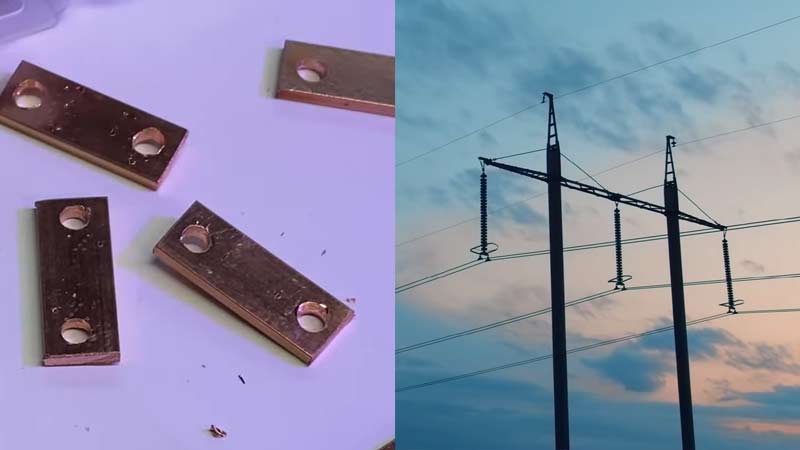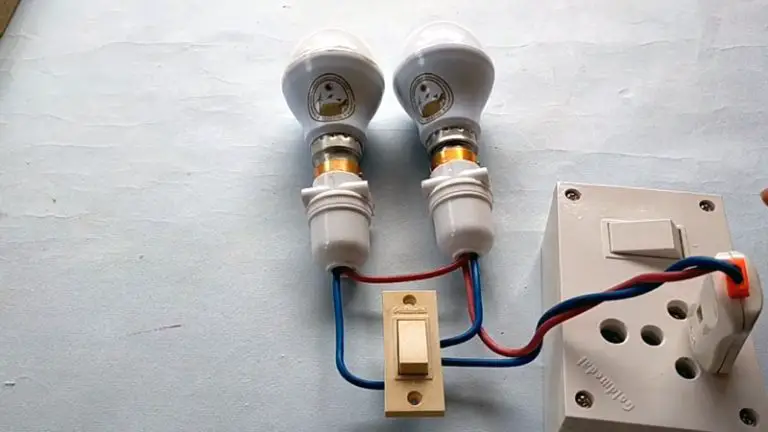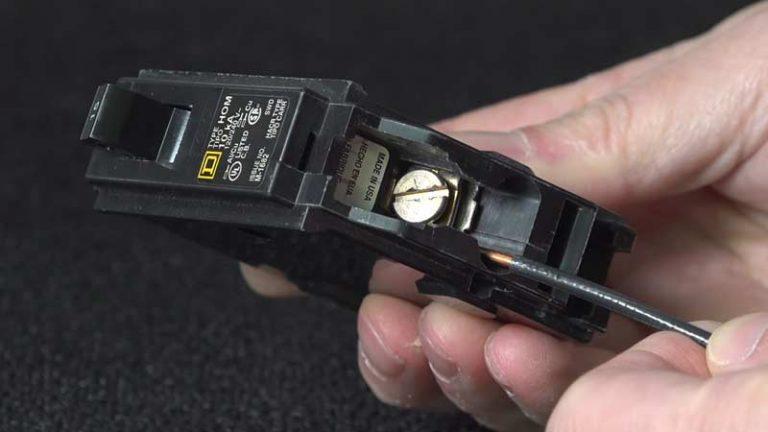What Is The Difference Between Bus Bar And Transmission Line

A transmission line switch yard is the first place your power goes when it leaves the generating plant. There are different types of switches used to route power, including bus bars and distribution units.
Generators provide an immediate source of electricity for critical loads in businesses and homes during blackouts or brownouts. Power can also be distributed to various parts of a building through transformers, which make sure that all electrical devices get the same voltage and amperage levels regardless of their location on a property. Finally, there’s always the risk of fire if something isn’t properly maintained.
You'll Learn About
What Is The Difference Between Bus Bar And Transmission Line?
A transmission line is a necessary component of your electrical system and it should be inspected regularly to ensure its proper function. A switch yard controls the flow of electricity by switching between different distribution units.
Bus bars are used to transfer power from one part of the system to another, for example when generating or distributing energy to appliances in your home. Your generator supplies electricity during an emergency or blackout situation and it needs regular maintenance in order not to malfunction.
The distribution unit transfers power safely throughout your home so that each appliance can work properly.
Transmission Line
A transmission line is a physical connection between two points that carry electric energy. Bus bars are the components at each end of the transmission line that transfers electricity from one point to another.
Transmission lines can be made out of different materials, including metal, plastic, and concrete. The type of material used in a transmission line affects its electrical properties and how well it conducts electricity.
Transmission lines need to be maintained so they can continue transmitting power safely and efficiently
Switch Yard
A bus bar is a type of electrical switch that performs the same function as a transmission line, with one exception- it’s much more compact. Bus bars are commonly used in industrial and commercial settings because they’re easier to install and maintain than transmission lines.
They’re also better suited for mountainous or hilly terrain where space is limited. When you need to replace a bus bar, be sure to call an electrician who specializes in switching yards because the process can be difficult and time-consuming. Although they come in different shapes and sizes, all bus bars operate on the same principle: they allow electricity to flow smoothly from one point to another.
Bus Bar
A bus bar is a metal or plastic device that connects the transmission line to the engine. The purpose of a bus bar is to prevent damage from occurring while the vehicle is in motion and to ensure proper alignment between the transmission and engine.
When purchasing a bus bar, be sure it meets your specific needs and requirements for installation. Generally, a busbar costs less than upgrading your transmission altogether. So it may be worth considering if you’re experiencing issues with your current setup or plan on keeping your vehicle for some time down the road.
Always consult an automotive technician when making any changes to your car’s components – they are experts in this field.
Generator
The bus bar is a type of transmission line that transfers power from the generator to the load using rotating gears. Transmission lines can be categorized by their construction: bus bar, overhead line, underground cable, and direct current systems.
Generator output may vary depending on how much power is needed at any given time. Therefore, it’s important to know your needs before making a purchase or selecting an installation plan for your new generator system.
When choosing between busbar and transmission line systems, remember that busbars offer more flexibility in terms of both size and placement options for generators within a facility – perfect for large commercial buildings or industrial complexes with multiple generators.
Finally, always consult with an experienced professional when installing any kind of electrical equipment – even if you’re confident in your abilities as a DIYer.
Distribution Unit
A bus bar is a device that helps distribute power from the transmission line to different parts of your building. It’s also used to protect electrical equipment from hazardous voltages and currents.
Transmission lines are high-voltage cables that carry electricity between generating stations and consumers, such as businesses or homes. Distribution units help regulate the flow of electricity by controlling switches and transformers along the way.
They’re also responsible for transferring power to specific loads, like appliances in your home or office buildings.
What is bus bar in transmission line?
A bus bar is a metal or plastic device that connects two transmission lines. It helps to prevent the lines from becoming twisted and damaged. A busbar is a metal bar that is used in Transmission lines to help reduce the risk of line failure.
When there is a problem with one of the transmission’s components, such as a broken wire or worn-out gear, the busbars will absorb some of the energy and prevent it from causing further damage. Busbars are usually made from steel and are located at regular intervals along transmission lines to help distribute stress evenly throughout the line.
They also play an essential role in preventing power loss and other incidents due to faulty transmission components. In order to use busbars effectively, they must be correctly installed and maintained by your Transmission repair specialist.
Although busbars do have their limitations, they can still provide benefits when used properly including reduced risks associated with Line Failure and improved system reliability.
If you notice any problems with your Transmission line – such as excessive noise or power loss – it may be worth having it checked out by a professional technician.
What is the purpose of a busbar?
A busbar is a metal support used in electrical wiring. It’s basically an iron or steel frame that holds two wires together while they’re being twisted and pulled through a conduit.
This helps keep the wire from becoming tangled, damaged, or shorted out.
Busbars are used to distribute electricity
When you have an electrical circuit, it’s important that the wires are properly insulated so they don’t cause interference with each other.
Busbars help ground and conduct electricity throughout a circuit. This is why busbars are often used in high-voltage areas such as power plants and telecommunications networks.
They help ground and conduct electricity
Busbars can also be used to create circuits that do not need direct contact between wires.
By using bus bars, you can safely connect two or more different pieces of metal without causing any damage or fires.
They come in different shapes and sizes
Different types of busbar take on various shapes depending on their intended use. For example, square bus bars are often found in power plants where they’re needed for distributing electric current evenly across large areas.
They’re often metallic strips of copper, brass, or aluminum
Depending on their construction, busbars may also be made from copper, brass, or aluminum. These metals have qualities that make them perfect for carrying electric currents (such as being resistant to corrosion).
What is the difference between cable and busbar?
Cable and busbar are two common types of electrical connections. Cable connections use cables to transfer electricity from one point to another. Busbar connections, on the other hand, use metal plates or bars to connect two points.
When it comes to electricity, cables are mainly used for moving electricity around.
Electrical cables are an assemblage of one or more wires running side by side or bundled together to carry electric current.
A busbar can be used in place of electrical cables when it comes to transferring high currents. Busbars are rigid pieces of copper or aluminum that are bolted or housed inside switchgear, panel boards, and busway enclosures for local high-current power distribution.
A cable is a wiring assembly of one or more wires. However, a busbar is made up of only copper or aluminum and does not have any insulation on it which makes it vulnerable to excessive heat and voltage fluctuations caused by the current passing through it.
When compared to electrical cables, cable assemblies usually have a smaller diameter making them easier to work with and they also possess greater flexibility than regular wire bundles due to their open design
What is difference between bus bar and feeder?
A busbar is a device that transmits power from one point to another. Feeders are devices that send electrical current from a source, like a bus bar, to outlets or consumers.
A feeder can be connected directly to the busbar or it can be connected indirectly through other devices.
How many types of busbar are there?
There are a variety of busbar types available, each with its own specific purpose. Auxiliary bus bars can come in handy in case of problems with the main busbar, and circuit breakers help protect against potential electrical hazards.
Switch isolating panels allow you to isolate different sections of an electric system from one another, while wiring harnesses keep everything connected together neatly. Make sure to choose the right busbar type for your needs before getting started on your installation.
Some people like to run power cable behind wall.
To Recap
Bus bars and transmission lines are both essential components of electrical systems, but they serve different purposes. A bus bar is a metallic strip or bar used to distribute electrical power within a localized system, such as a switchboard or panel.
In contrast, transmission lines are used to transport electrical energy over long distances, often between power plants and substations. While bus bars are designed for high current density in compact spaces, transmission lines are built to minimize energy loss over vast distances.
If you’re curious about how electrical systems impact your daily life, you might wonder if your landlord can see your electric bill. Understanding these systems can help you make informed decisions about your home’s energy usage.






